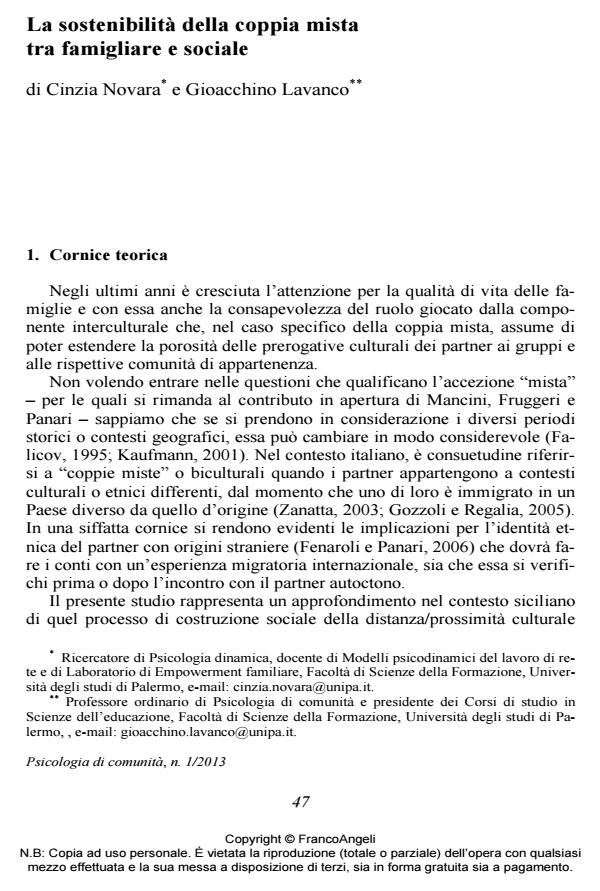The sustainability of mixed marriages between family and social
Journal title PSICOLOGIA DI COMUNITA’
Author/s Cinzia Novara, Gioacchino Lavanco
Publishing Year 2013 Issue 2013/1
Language Italian Pages 17 P. 47-63 File size 1198 KB
DOI 10.3280/PSC2013-001005
DOI is like a bar code for intellectual property: to have more infomation
click here
Below, you can see the article first page
If you want to buy this article in PDF format, you can do it, following the instructions to buy download credits

FrancoAngeli is member of Publishers International Linking Association, Inc (PILA), a not-for-profit association which run the CrossRef service enabling links to and from online scholarly content.
The paper examines two levels of analysis: a macro level studying the identity of place in reference to the general social context and the residential neighbourhood, in particular; the second level refers to the dynamics of the couple and examines the strategies for managing differences between partner and the educational styles adopted in the presence of children. According to the basic assumptions of qualitative research, twenty-two mixed couples living in Sicily were interviewed. To analyse the contents which emerged from interviews the Atlas.ti software was used. Among the most findings there is the perception of diversity that the couple feels not only as a carrier discriminating against it but also as a value to be transmitted to their children, the importance of the support network of family and neighborhood as variables in able to moderate the perception of marginality.
Keywords: Intermarriage, mixed couple, discrimination, educational styles, support network of family, identity of place.
Cinzia Novara, Gioacchino Lavanco, La sostenibilità della coppia mista tra famigliare e sociale in "PSICOLOGIA DI COMUNITA’" 1/2013, pp 47-63, DOI: 10.3280/PSC2013-001005